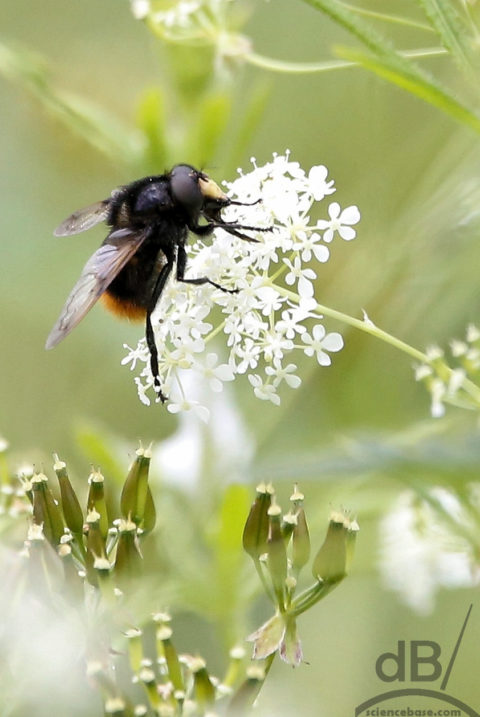Well, this might look, at first glance, like a bee, but look again, especially at those huge compound eyes, the mouthparts, and those wings – this is a hoverfly. In fact, it’s one of the biggest, as ID’d for me by friend of the blog Brian Stone – Volucella bombylans.

“One of the bee mimic hoverflies and you get two for the price of one. Same species has two forms, one like this (variety bombylans) that mimics red-tailed bumblebees (primarily Bombus lapidarius) and another with yellow on the thorax and a white tail (variety plumata) that mimics other bumblebee species (B. lucorum and B. terrestris). Although they use the bumblebees’ nests to lay their eggs they aren’t particularly harmful to the bees.” Brian has photos of the other form of this hoverfly on his blog.
This is an example of Batesian mimicry wherein a harmless species has evolved to imitate the warning signals of a harmful species directed at a potential predator. English naturalist Henry Walter Bates first described this kind of mimicry in butterflies of the Brazilian rainforests.